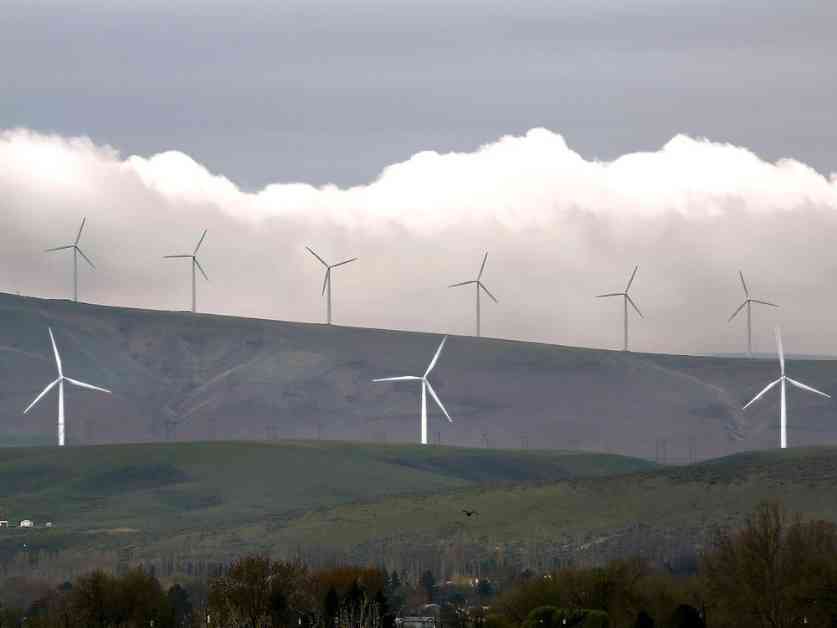Washington Governor Jay Inslee has given his approval for a massive wind farm project, urging officials to speed up the process of approving turbines. The project, known as the Horse Heaven Wind Farm, had faced rejection earlier this year when a scaled-down version was proposed. However, Inslee emphasized the importance of meeting the state’s clean energy needs quickly.
The original plan for the $1.7 billion project included 222 wind turbines spread across 24 miles in eastern Washington, along with three solar arrays covering 8.5 square miles. The proposal was cut in half by the Energy Facility Site Evaluation Council due to the presence of endangered ferruginous hawk nests in the area. The council recommended a 2-mile buffer around each nest, leading to a reduction in the number of turbines.
After rejecting the council’s initial recommendation to shrink the project, Inslee approved a compromise plan that would assess the impact on individual nests on a case-by-case basis. This decision could potentially allow the developer, Scout Clean Energy, to move forward with all but 30 of the originally proposed turbines.
Governor Inslee, a strong advocate for climate initiatives, has made renewable energy a focal point of his tenure. With Washington’s energy demands projected to increase significantly by 2050, the need for projects like the Horse Heaven Wind Farm becomes increasingly vital.
The wind farm project has sparked debate among local residents and environmentalists, highlighting the ongoing tension between meeting energy needs and protecting wildlife habitats. Inslee’s push for swift approvals reflects the urgency of transitioning to cleaner energy sources to combat climate change and reduce carbon emissions.
As Washington works towards a more sustainable energy future, the approval of the Horse Heaven Wind Farm signals a step in the right direction. By balancing environmental concerns with the necessity of expanding renewable energy infrastructure, the state aims to make significant progress towards a greener and more resilient energy grid.






















